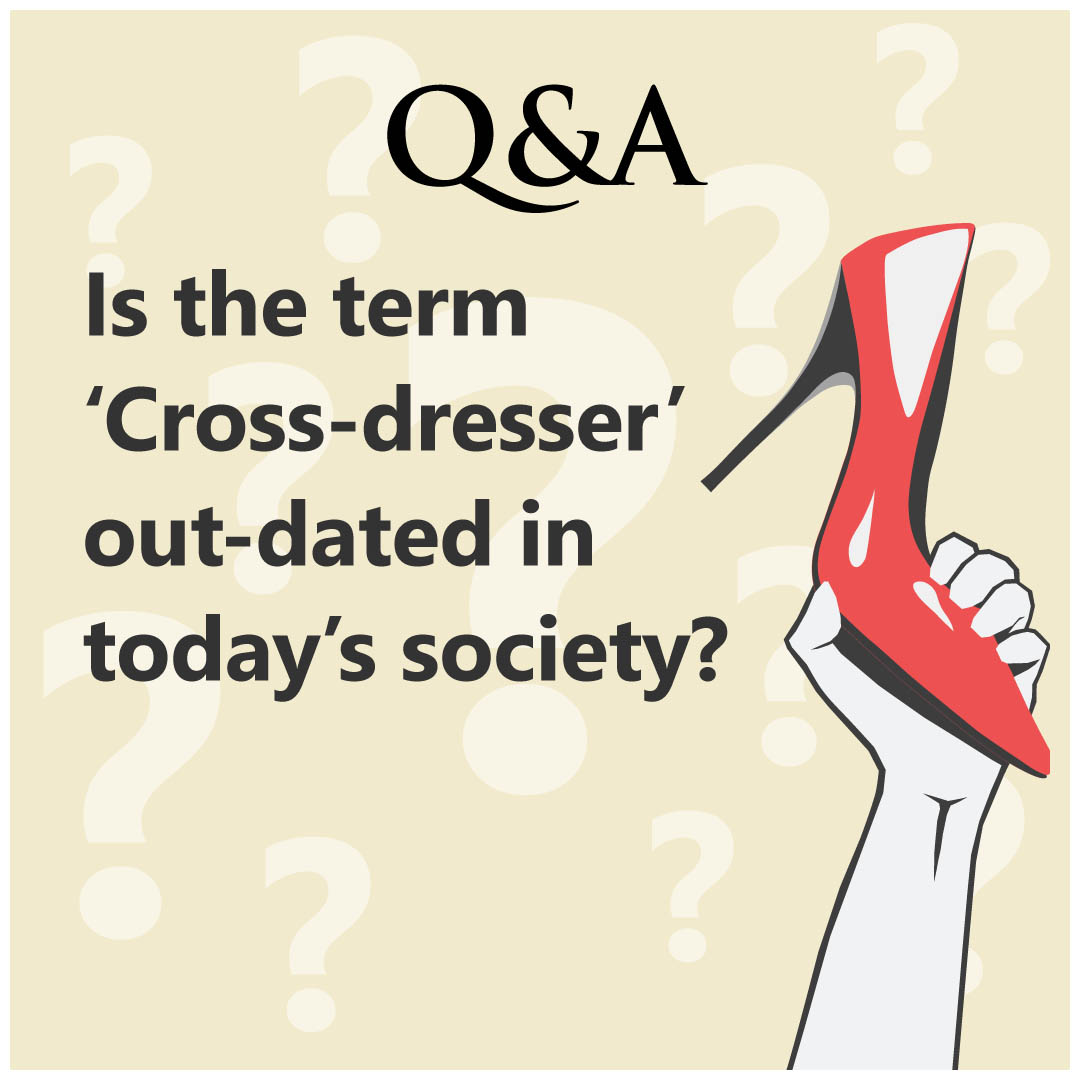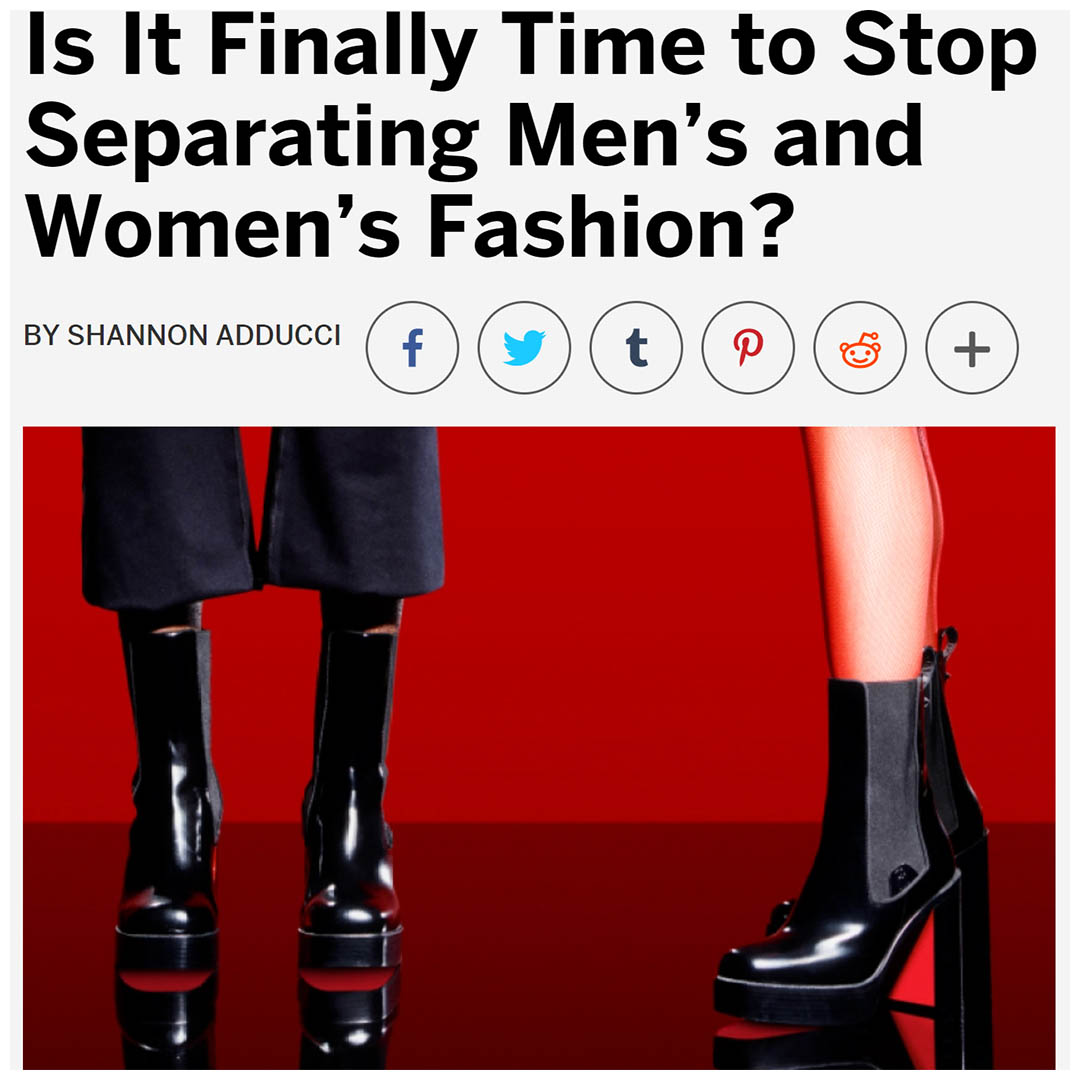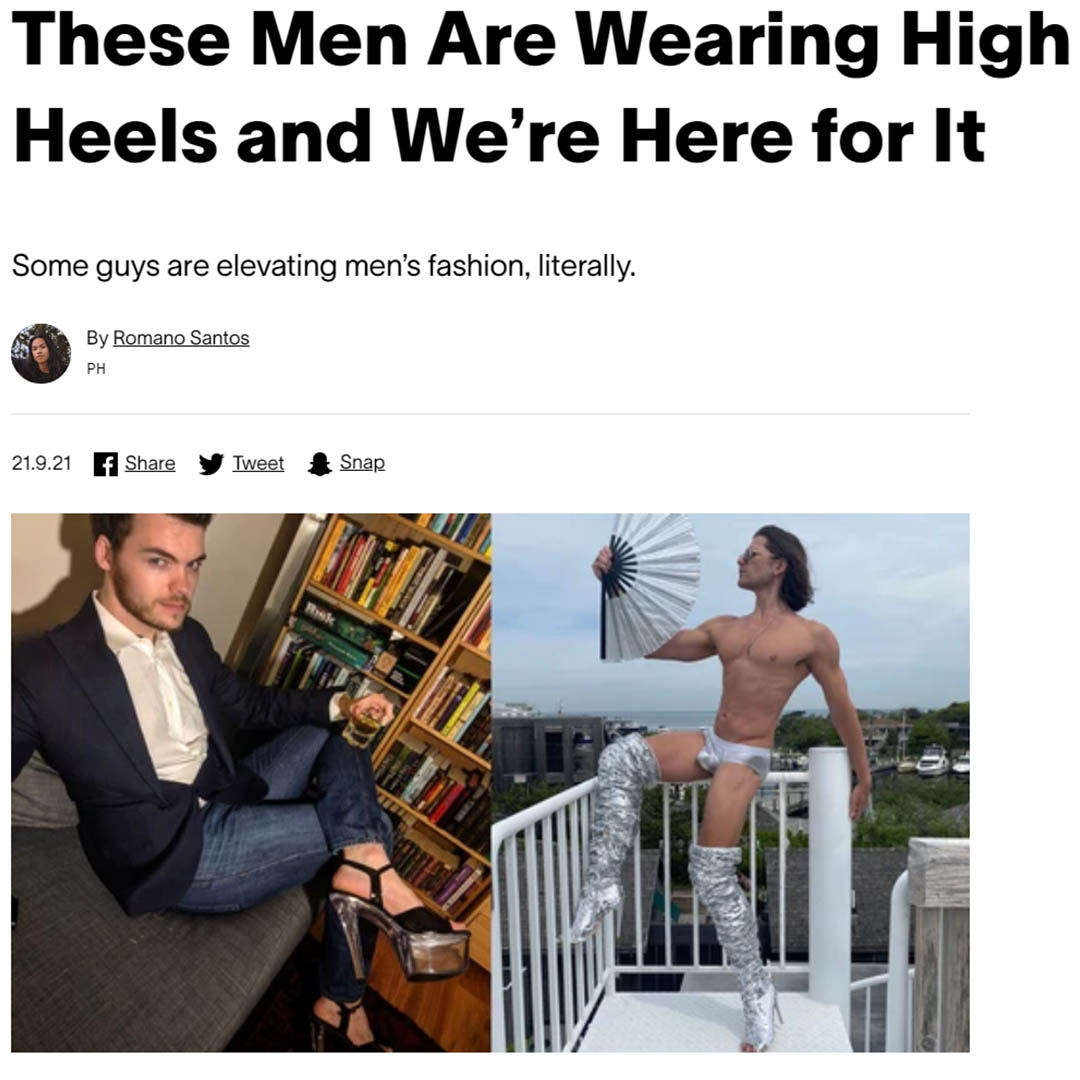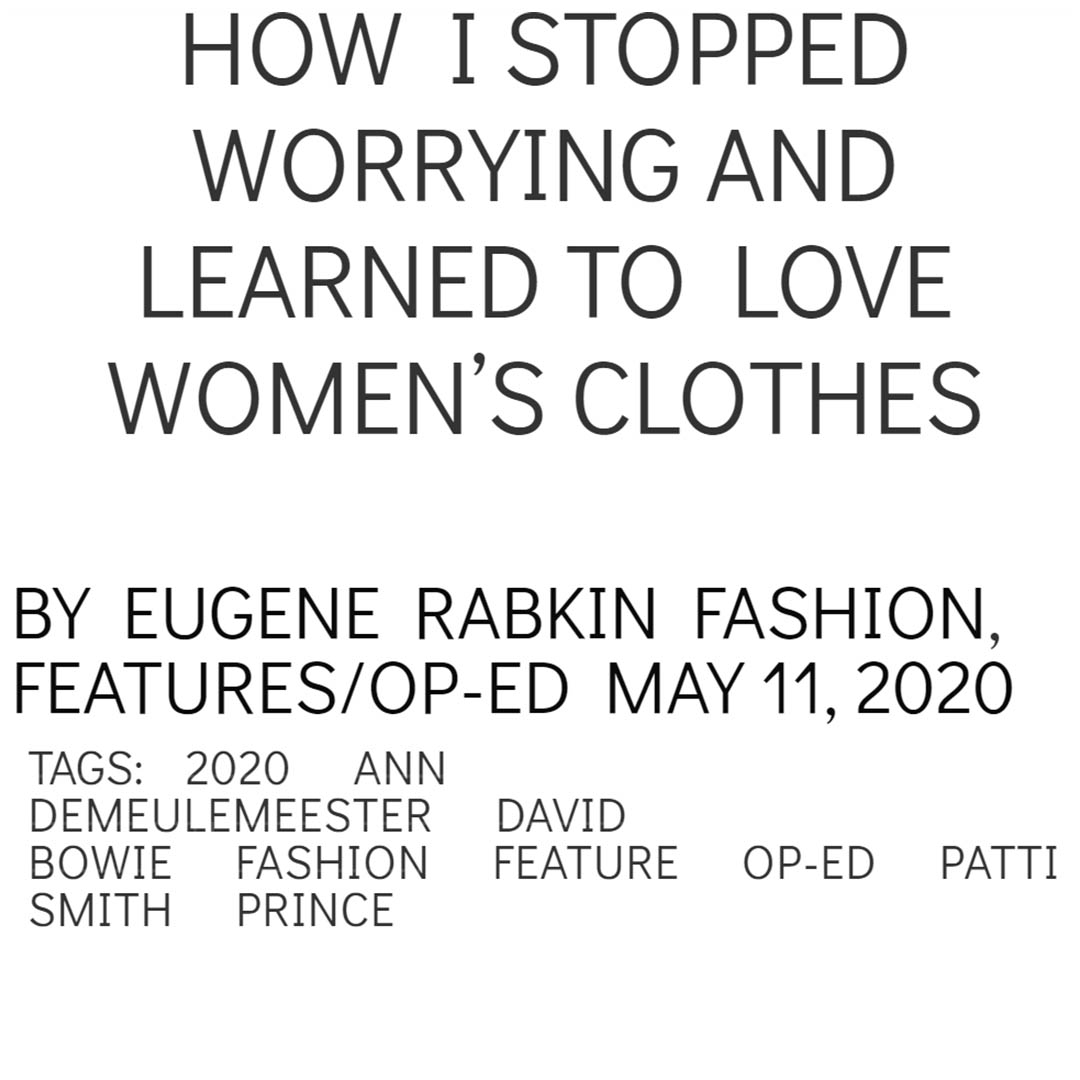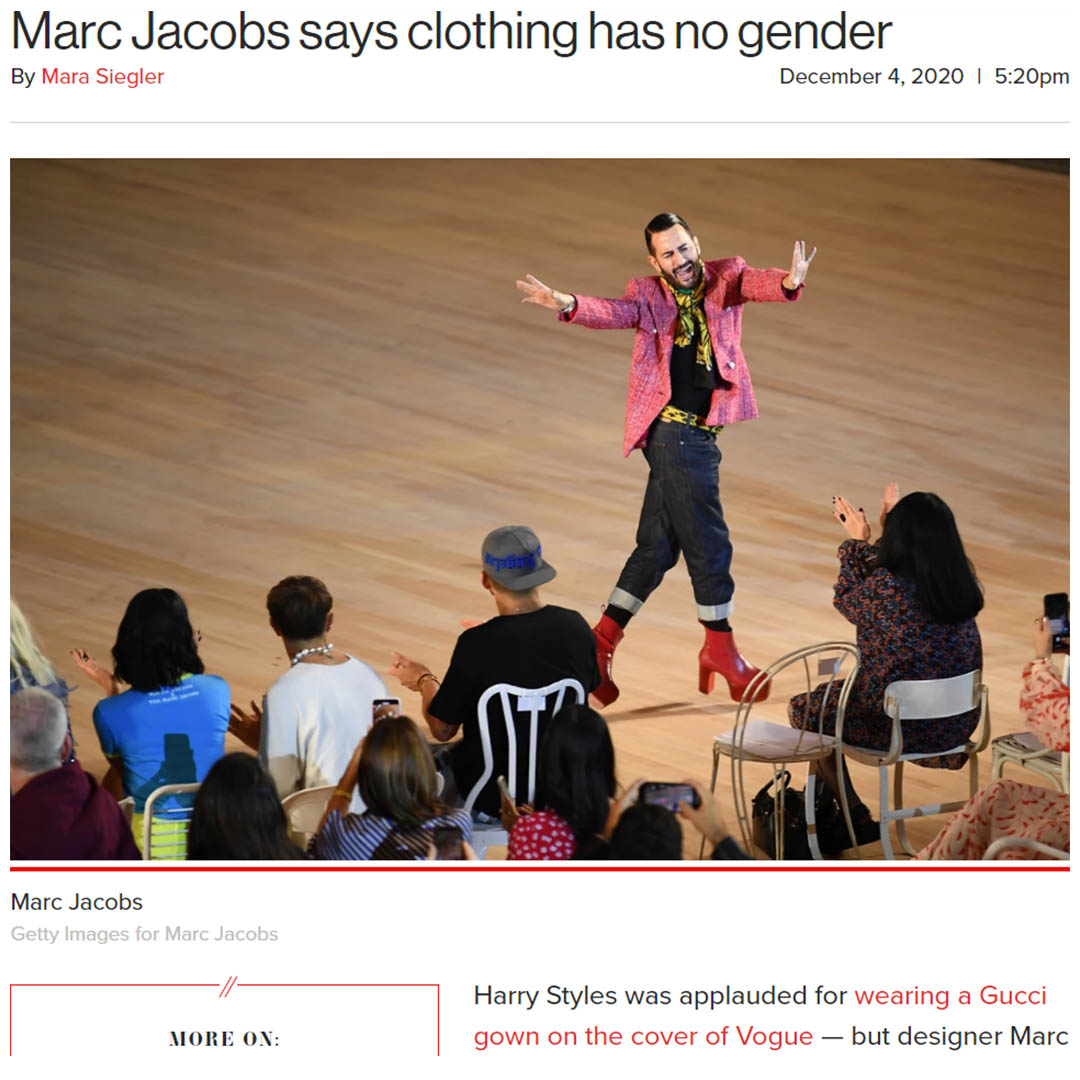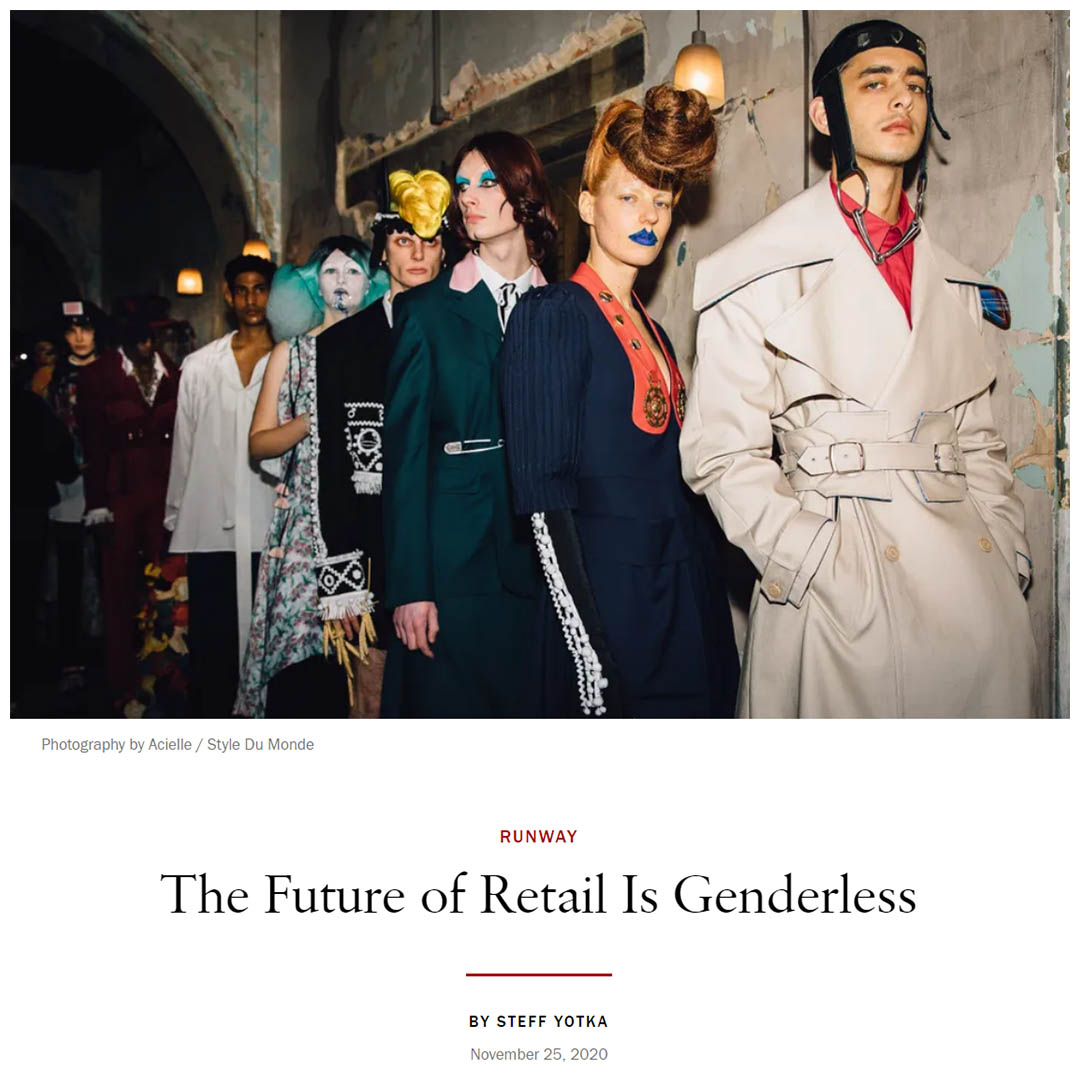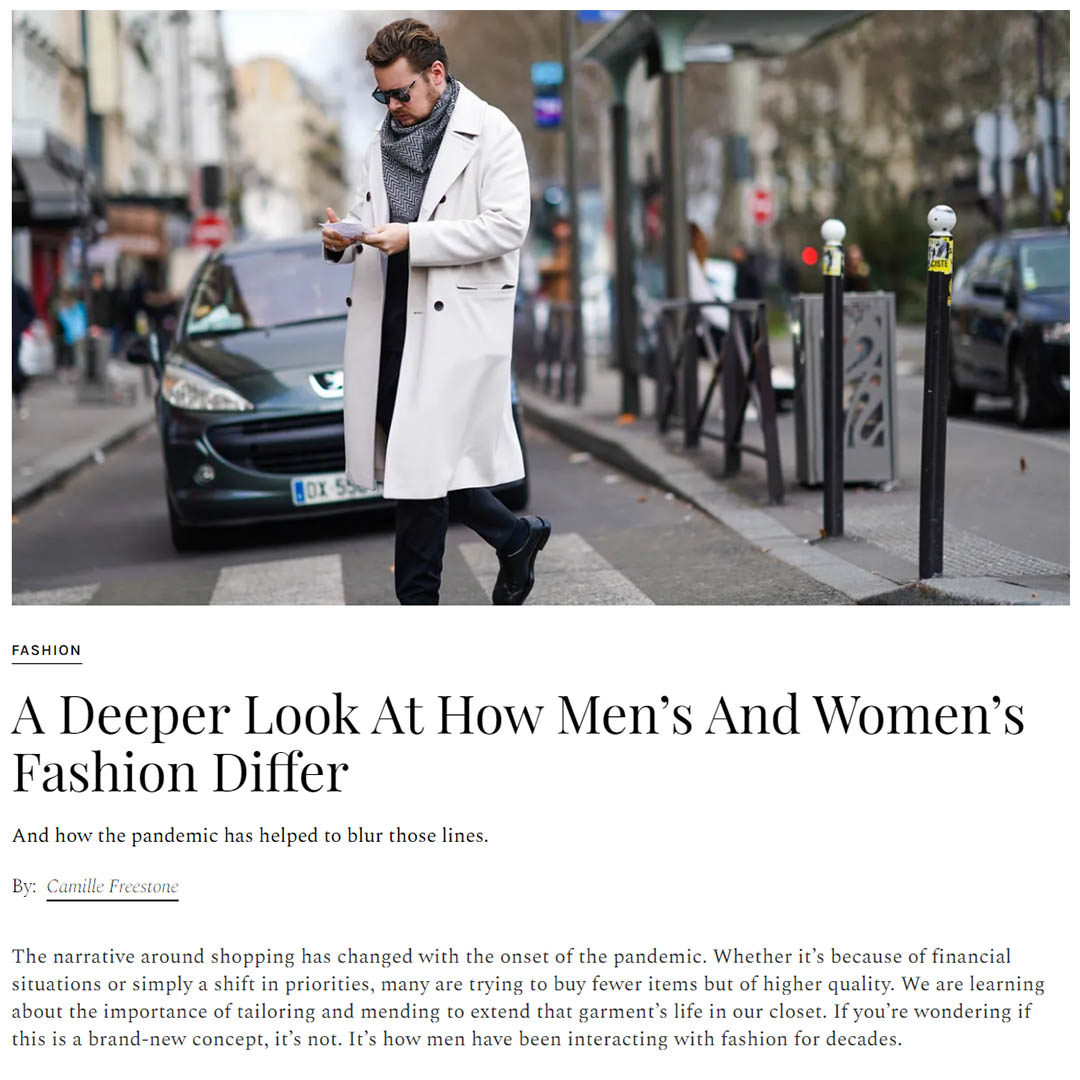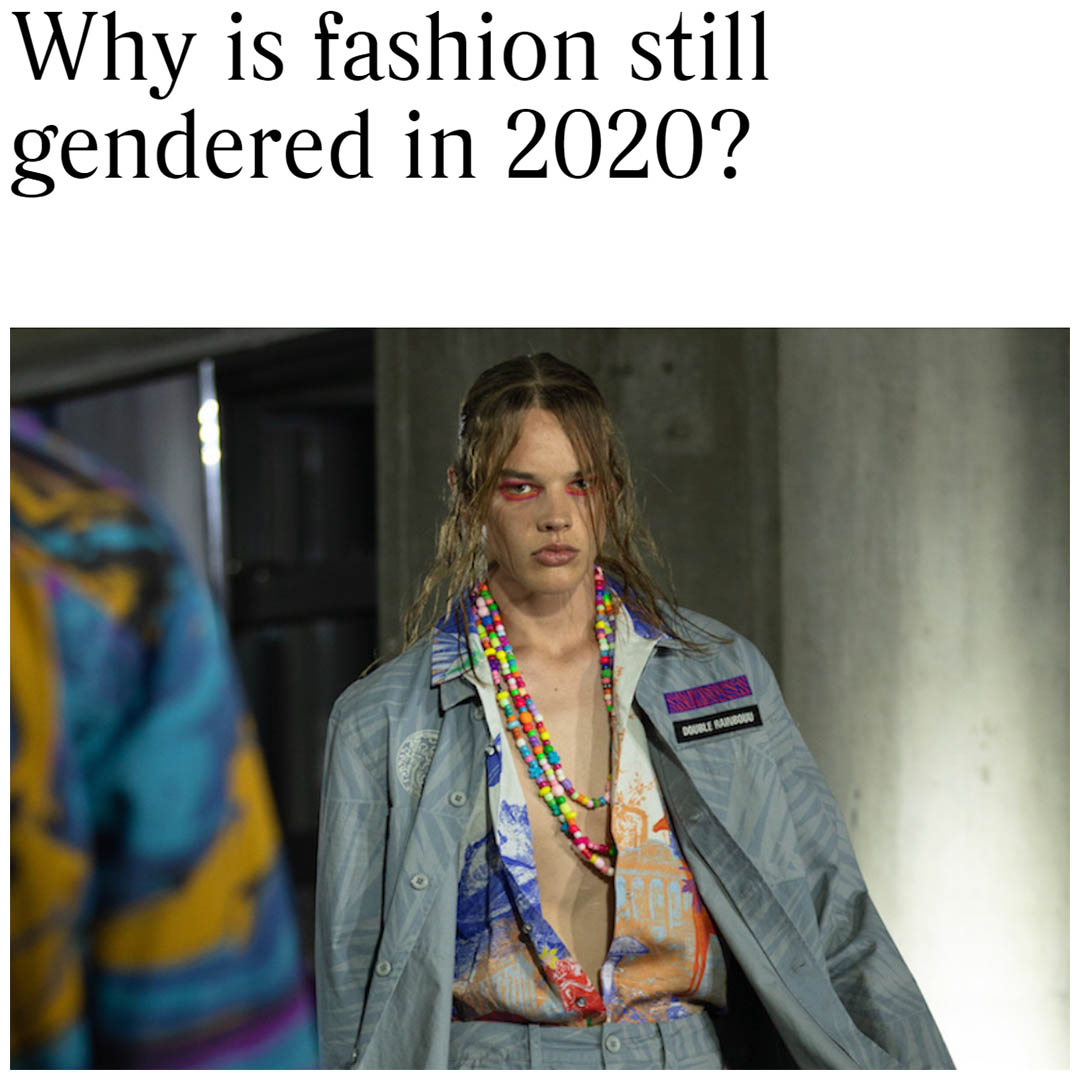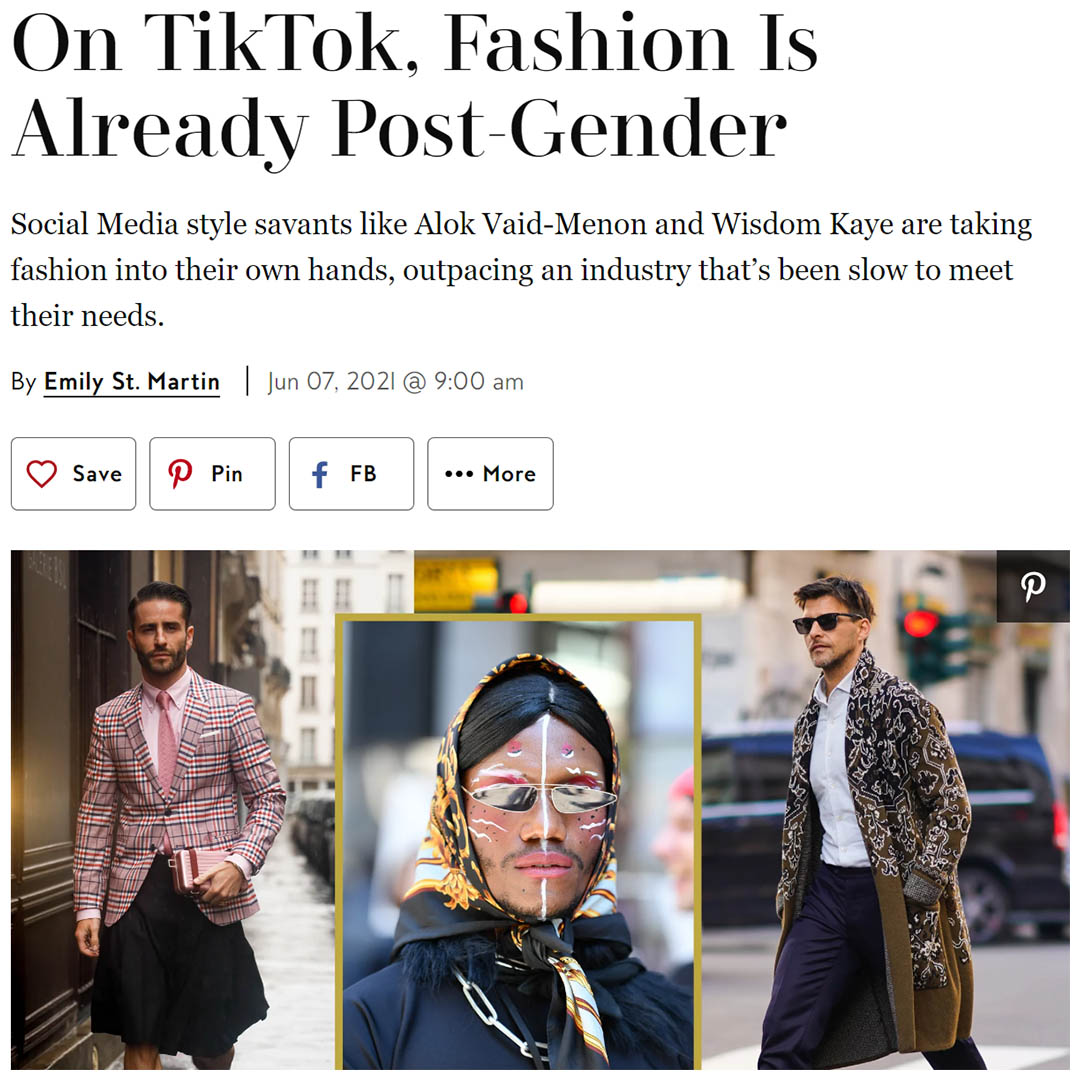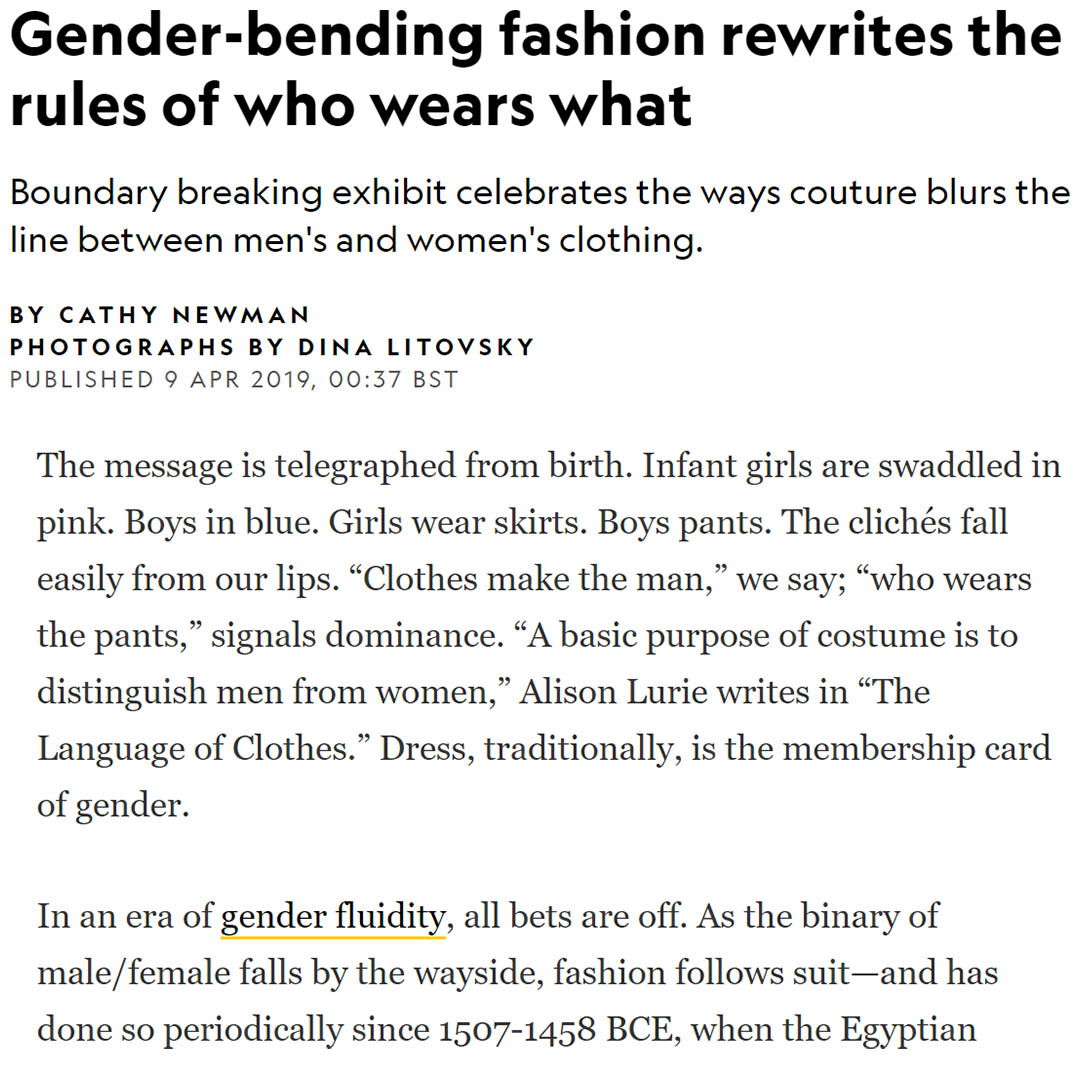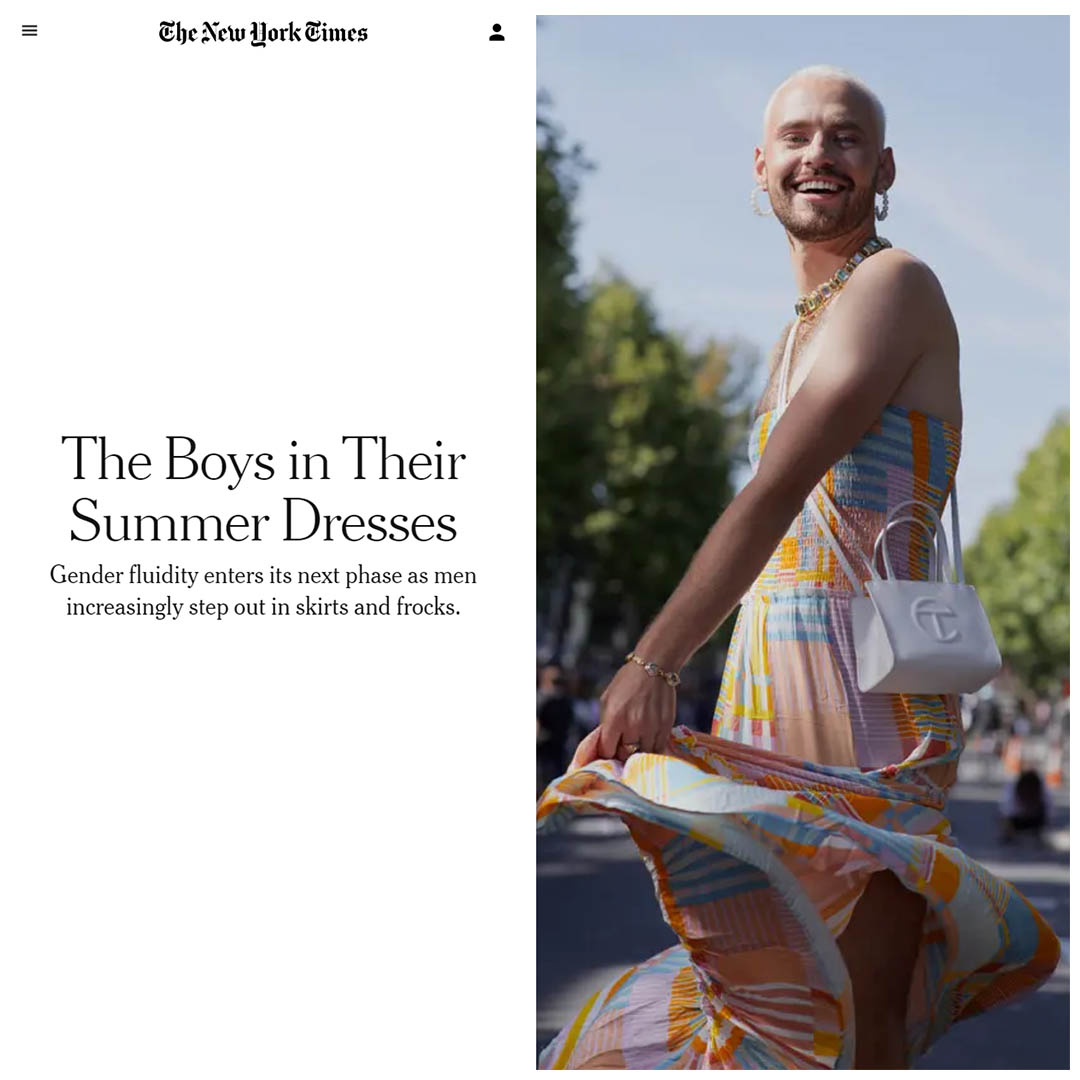Articles tagged with "Womens Fashion"
Is the term ‘Cross-dresser’ out-dated in today’s society?
Before we can answer that question, some definitions may be useful.
Cross-dressing: is the act of wearing items of clothing not commonly associated with one's sex. Cross-dressing has been used for purposes of disguise, comfort, comedy, and self-expression in modern times and throughout history.
Almost every human society throughout history has had expected norms for each gender relating to style, colour, or type of clothing they are expected to wear, and likewise most societies have had a set of guidelines, views or even laws defining what type of clothing is appropriate for each gender.
The term "cross-dressing" refers to an action or a behaviour, without attributing or implying any specific causes or motives for that behaviour. Cross-dressing is not synonymous with being transgender.
Another term for cross-dressing is Transvestitism. Someone who engages in Cross-dressing/Transvestitism is called a Cross-dresser(CD)/Transvestite(TV), although the term Transvestite is now commonly considered outdated and disrespectful. The term Transvestite (often shortened to the slang term "Tranny") was historically used as a slur against people who wore clothes of the opposite sex. Cross-dresser is now a much more accepted term. Cross-dresser was coined by the transgender community.
MtF and FtM Cross-dresser: A man who dresses in women's clothing is a male to female (MtF) cross-dresser. a woman who dressing in men's clothing is a female to male (FtM) cross-dresser. For women, the term is seldom used and the wearing of trousers/pants/men's shirts is often discounted as cross-dressing. This is because in our current society, male clothing is often considered gender-neutral. Therefore when someone uses the term "cross-dresser", the focus shifts mainly towards a MtF cross-dresser.
With those definitions made, two additional points are important to recognise:
a). Cross-dressing as it relates to Transgender: Wearing clothes intended for the opposite sex does not mean that the person identifies as the opposite sex. It is different from being Transgender or Transsexual. When transgender people dress according to their gender identity it is not necessarily the same as cross-dressing.
It is important to know that a cross-dresser does not necessarily have body or gender dysphoria (gender dysphoria means feeling uncomfortable with their body and gender they were born with), they are perfectly happy with their gender assigned at birth and have no desire to change their sex, but simply enjoy being able to cross-dress from time to time. However, Transgender describes people who feel that their gender identity is different from their biological sex.
Most transgender people do not appreciate being called cross-dressers, and for good reason. As they are wearing clothes of their own gender identity they consider themselves, and should be considered by others as the gender they are dressing in. A Transgender woman wearing women's clothes is not a cross-dresser, nor is she a drag queen. She is just a woman. Similarly, a Transgender man, wearing men's clothes is not a cross-dresser, nor is he a drag king. He is just a man.
b). Cross-dressing as it relates to Drag: A cross-dresser should not be confused with drag queens/kings. Drag is a special form of performance art based on the act of cross-dressing. Drag queens are usually male performance artists who dress in female character. Drag Kings are mostly female performance artists who dress in male character.
Now, to get down to answering the question...
As gender refers to the socially constructed roles, behaviours, expressions and identities of girls, women, boys, men, and gender diverse people we can deconstruct that concept. While the term Cross-dresser works well for some people, as it has for years, for many others they do not feel that it works well for them. For non-binary or agender people (who don't identify with the gender binary of male & female) who want to wear certain clothes as part of their gender expression, feel that the term is obstructive and often offensive towards them. With the realisation that clothes have no gender, a skirt or a pair of trousers are essentially just coloured and textured fabric cut and sewn into a garment. The clothes know nothing of gender other than that assigned to them by their creator. The same, of course applies to shoes - high heels are not women's shoes... they are just high heels.
A growing number of people believe that today's socially constructed gender stereotypes don't serve us well in enabling fully inclusive gender expression that recognises our diversity. With the central fact that gender is a social construct, gender labelling of clothing is also a therefore also social construct and can equally be challenged and deconstructed. Gender labelling of clothing perpetuates the construct, but in more recent years this is slowly changing with manufacturers and retailers removing, or neutralising gender labelling on clothes and on signage in stores.
Manufacturers and retailers, now too numerous to mention, are also making items of clothing more traditionally intended for a single sex for both sexes, while recognising that the key differentiator is not actually our biological sex, but our body shape. Does the term cross-dresser still stand up when the clothes have no gender labels? Maybe not.
All clothing, of whatever shape, colour, texture or style has been worn by both sexes as normal daily wear at some point in history, so why do we have gendered clothing now? Visual communication is one of the many reasons we dress the way we do. Our gender identity is expressed visually through what we wear, as can be our social status or rank within an organisation. Sometimes our visual appearance, what we wear, make-up, hairstyle, skin colour, whether rightly or wrongly, can trigger others around us through our learned and often habituated social conditioning to make a judgement on how they should interact with us. Aside from organisational ranking, we should not treat people differently because of their appearance. Everyone is born equal and should be treated as such. Does what they wear really matter more than their actions and achievements as a person?
In conclusion, the term Cross-dresser is fine for a socially constructed world in which there is a gender binary, but it does not work well in a non-binary world where gender is expressed on a spectrum and where many believe that clothing has no gender to start with. When it comes to the use of the term today, if the logic used to describe a man in "women's" clothes as a crossdresser does not hold when applied to a woman wearing "men's" clothes - it's not logic, it's sexism.
When clothing has no gender there are no lines to "cross", hence no cross-dressing and why we therefore believe that the term cross-dresser is out-dated and should decline in use.
Posted: 27 July 2022
Footwear Magazine takes a look at the new "Our Angels" Inclusive sized collection from Christian Louboutin and poses the question "Is it finally time to stop separating men's and women's fashion?".
The fashion industry has followed social gender norms since the dawn of what we now call fashion, though when now considered through egalitarian eyes there are huge differences between fashion offered for men and women. The fashion industry is reflecting on these imbalances and tentatively adjusting what's on offer one high heeled step after another.
In heels for men (or indeed genderless), with big names like Louboutin taking an interest and with real-world wear visible by celebrities on the Red Carpet and key social media influencers there is certainly more on offer now. It may take some time, but generally in the fashion world those trends will start to trickle down into the mainstream.
Original URL: https://footwearnews.com/2022/fashion/opinion-analysis/gender-neutral-fashion-trends-1203233685/
Posted: 6 July 2022
Vice magazine reports on how men expressing themselves by wearing items normally regarded for women is nothing new. "It's a bit of a middle finger to societal norms" says Alex Ringler, who interviewed for the piece. Another interviewee, Marcus Territory says "The primary purpose of the heels is to be just another piece of an unambiguously masculine outfit... a way to explore new aesthetics and styles." a view shared by many.
Original URL: https://www.vice.com/en/article/4av9km/men-high-heels-non-binary-fashion
Posted: 8 December 2021
@eugenerabkin, founder of @stylezeitgeist, gives us his perspective on dressing in women’s clothes as a straight man. He shares his mindset for wearing womens clothes and how, like many men, it’s become more of a position of expanding his options when it comes to what he wears.
Original URL: https://www.sz-mag.com/news/2020/05/how-i-stopped-worrying-and-learned-to-love-womens-clothes/
Posted: 24 October 2021
@TheMarcJacobs has been wearing women’s fashion for 20 years. He, like many, believe that clothing has no gender and as one of fashion’s powerhouses of free thinking and great styles, he should know!
Original URL: https://pagesix.com/2020/12/04/marc-jacobs-says-clothing-has-no-gender/
Posted: 2 September 2021
Vogue magazine examines the retail fashion industry and with the statement “A piece of fabric, a textile, or a garment has no gender. This is an undisputable fact!” and the reality of the retail fashion industry divided along binary gender lines, probes what the industry can do to represent the spectrum of gender in a more inclusive and realistic way.
Original URL: https://www.vogue.com/article/the-future-of-retail-is-genderless
Posted: 7 August 2021
Mens and Women's fashion are converging and the pandemic has helped. Find out why in this article from Coveteur.
Original URL: https://coveteur.com/2020/10/02/mens-womens-fashion-differences/
Posted: 29 July 2021
This article from Fashion Journal in 2020 asks a pointed question “Why is fashion still gendered in 2020?” and suggests that segreated clothing in stores may soon be a thing of the past. It highlights Androngenous dressing as one factor driving the change and how we are re-thinking the purpose of clothing.
Original URL: https://fashionjournal.com.au/fashion/fashion-gendered-2020/
Posted: 2 July 2021
This article by @edsullivan2 from the brilliant InStyle magazine (@instylemagazine) explores how spaces like TikTok, Instagram and YouTube have given androgonous stylists, post-gender visionaries and queer creatives the freedom to embrace their authentic selves, tools to build a platform, and potential to have a wide reach and impact. We see how people like @tripleminor, @wisdm, @alokvmenon, @sammyratelle, @elierlick, @jayybeech, @bethanycmeyers, @nicotortorella and @patrickchurchny are successfully challenging fashion boundaries and taking fashion influence from the streets to social media.
Original URL: https://www.instyle.com/fashion/clothing/tiktok-gender-free-fashion
Posted: 20 June 2021
This article from respected magazine, National Geographic, spotlights an exhibition that celebrates the ways couture blurs the line between men’s and women’s clothing. It hints that social media is helping create communities of people that can influence the way we dress. It asks “who wears the pants?” and charts the rise of women wearing pants, something that can inspire us as we march forward in our heels. The article concludes with a positive message from a member of the LGBTQ community which suggests that our voices may finally be heard and our gender bending fashion seen.
Original URL: https://www.nationalgeographic.co.uk/2019/03/gender-bending-fashion-rewrites-rules-who-wears-what
Posted: 17 June 2021
This article from the New York Times reflects upon how people have redefined themselves during lockdown and experimented with the wearing of dresses and other clothing normally considered feminine. Inspired by the appearances on TV of stars such as Kid Cudi and Lil Nas X wearing dresses and skirts people are eschewing gender stereotypes and bringing in a new era where clothing can no longer be considered a “tell” for anything.
Original URL: https://www.nytimes.com/2021/06/09/style/gender-the-boys-in-their-summer-dresses.html
Posted: 17 June 2021
